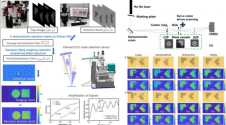Koala Youran officially completed shipment of China's first glass-based Micro LED wafer quality inspection equipment
The first domestic glass-based Micro LED wafer mass detection equipment independently developed by Koala Youran has officially completed shipments recently. This indicates that Koala Youran has completed the technical research and development of the product and has been recognized by customers, and has the ability to mass-produce Micro LED wafer mass detection equipment. The product has the characteristics of high precision, high stability, and high efficiency.
According to Koala Youran, in addition to appearance inspection, Micro LED wafer inspection also requires accurate measurement of chip rotation to meet the core quality requirements of Micro LED wafers. The glass-based Micro LED wafer inspection equipment developed by it integrates internationally advanced technology and its independently developed core algorithm, and has the characteristics of high precision, high stability, and high efficiency.
The device adopts a high-precision adjustable magnification optical system with a 20X optical accuracy of up to 0.16um. Combined with the company's self-developed "active learning" AI algorithm, it can not only accurately identify appearance defects, but also accurately classify defects.
In terms of deviation measurement, Koala Youran eliminates system errors caused by factors such as motion and distortion through calibration and coordinate system conversion, ensuring the high accuracy of deviation measurement. The measurement error under standard film testing is controlled within ±0.5um.

